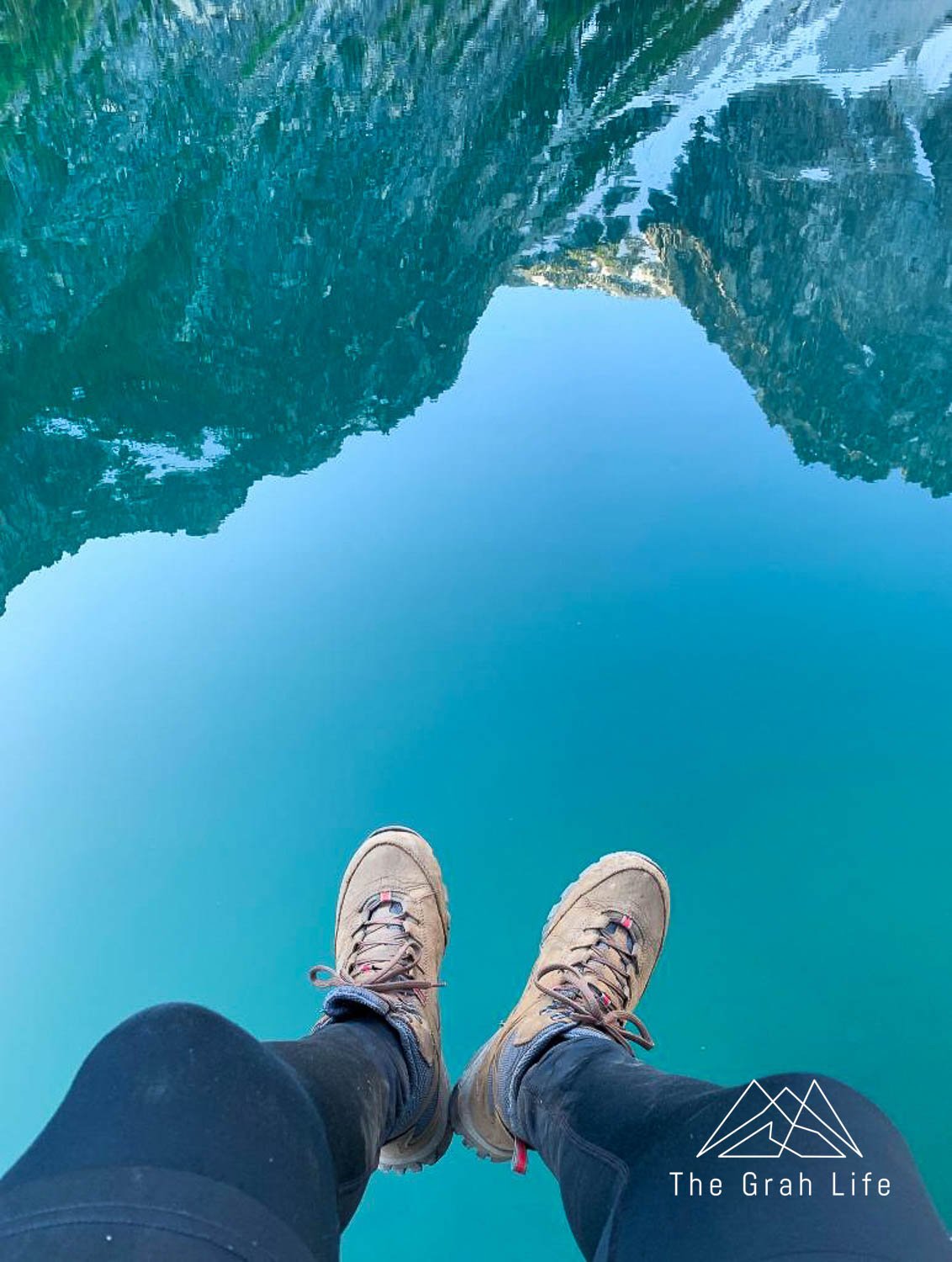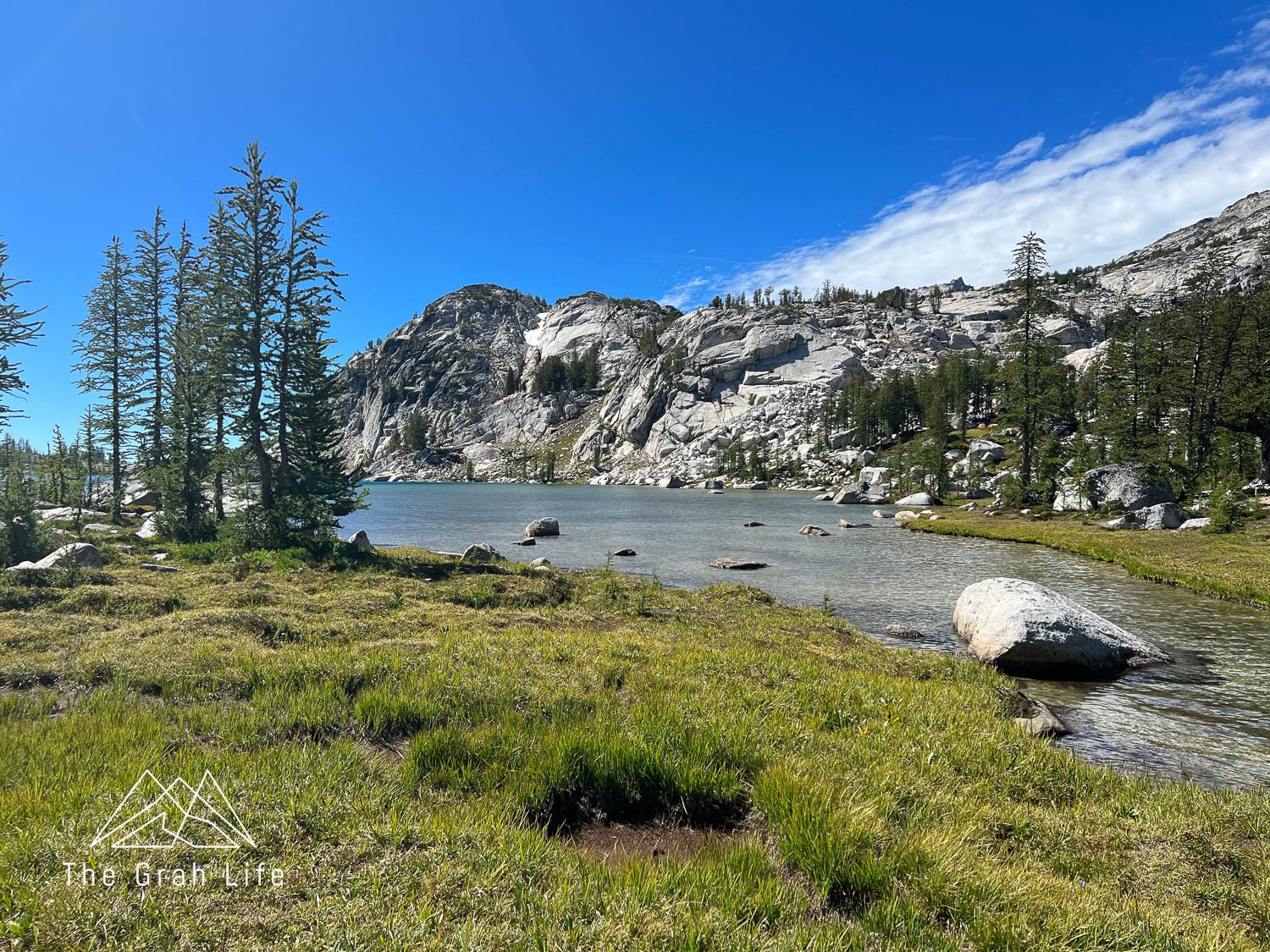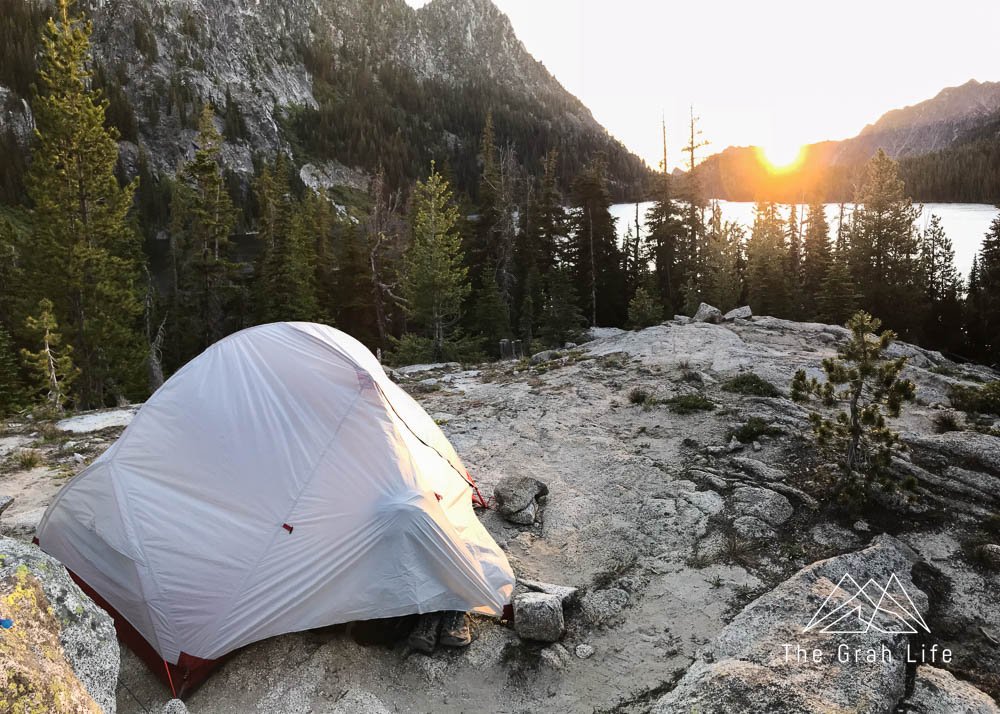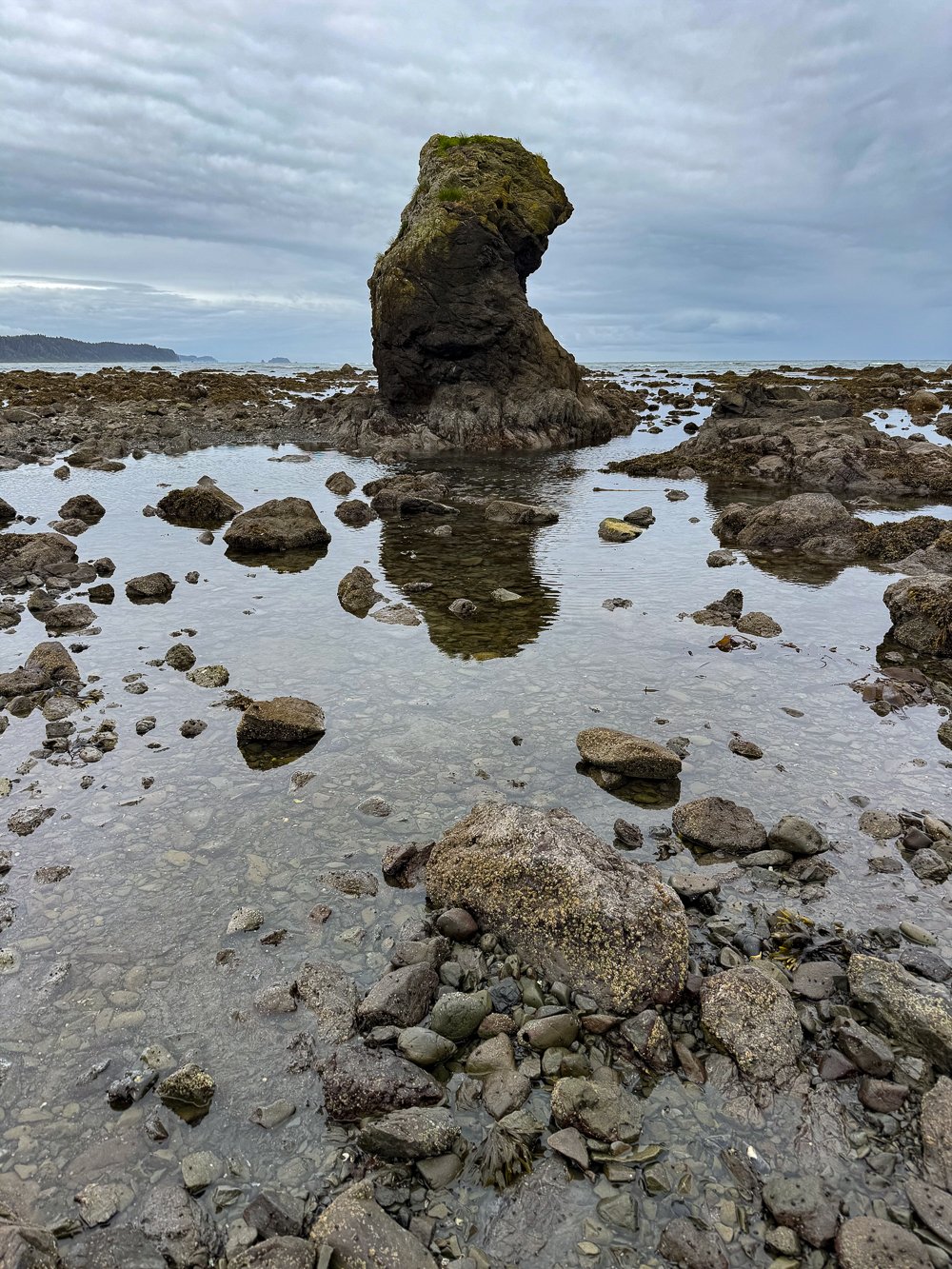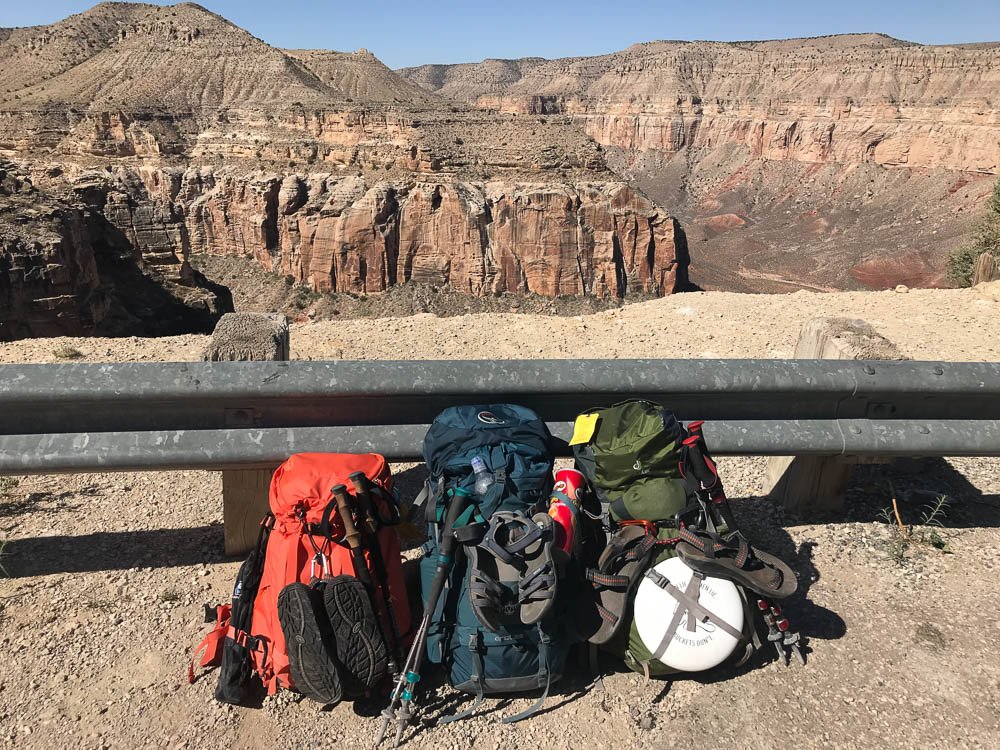How to Backpack the Enchantments in Washington
Backpacking in the Enchantments is a highly coveted privilege. It’s full of some of Washington’s best scenery, including alpine lakes, beautiful waterfalls, rugged peaks, and larches. To help preserve the environment, there is a permit lottery to backpack, and the area is regularly patrolled by rangers.
Winning permits isn’t a simple task though. Read on for information on how to apply, ideal times to backpack, and more.
Permit lottery
You can apply for permits between February 15th and March 1st here. To enter the lottery, you’ll need to select your desired dates, group size, permit zone, and pay a $6 fee. Since it’s a lottery, there is no benefit to applying earlier. You’ll have the option to select three different dates and zones, which are explained below.
Log back onto recreation.gov between March 17th and March 31st — this is when the lottery winners are announced. If you see that you’ve won a permit, you’ll need to claim your permit by confirming your entry and exit dates. You’ll also need to pay an additional $5 per person/per day for your party.
Alternate permit holders
We love that they’ve added alternate permit holders to the Enchantments lottery! In the case of the primary permit holder being unable to make their permit dates, their group can still backpack if there is an alternate permit holder listed and able to go.
Choose your alternate permit holders wisely because they will not be able to enter the permit lottery separately. They’ll also need to accept the alternate position via email within 72 hours of you applying.
Selecting an alternate permit holder is optional, but doing so can only be done during the lottery application.
How to better your odds
Your odds of winning permits will differ depending on the zones you apply for, the dates, and your group size. July and August are the most popular months, with Friday being the most popular day to enter the Enchantments. You’ll have the best odds of winning when applying to enter between Sunday and Wednesday.
Group size can work for or against you as well. Up to eight people are allowed in one group. If you’re hoping to win permits to the Core Zone, more people in your group could be considered a disadvantage since they limit the number of permits by people. If you’re applying to other zones, a larger group could work in your favor since permits are allotted by group. Have everyone in your group apply and you could have better odds of winning.
What if you didn’t win a permit?
Unclaimed permits
Those that won permits but didn’t claim them will have them put back on sale on April 1st at 7:00 am. Log on to recreation.gov to snag one.
Walk-up lottery
One permit from each zone is reserved for walk-ins, except on Sundays. These go on sale at the Leavenworth Ranger Station in person at 8:30 am during the permit season.
Day hike
Permits to day hike are unlimited and self-registered at the trailhead. This is a great way to see a glimpse of the Enchantments. We’ve got hiking recommendations for each zone below. Just make sure to arrive early to get parking!
Thru hike
If seeing a bit of the Enchantments isn’t enough for you, try thru hiking through four of the zones. It’s a grueling 18-mile hike, but you’ll see the best of the Enchantments in one day!
Enchantment Zones
The Enchantments is split into five zones. When you apply for the permit lottery, you’ll select your first, second, and third choice of zones and dates. If you win permits for any zone but the Core Zone, you’ll only be allowed to camp in that zone.
Core Enchantment Zone
The Core Zone is the farthest area into the Enchantments. When backpacking, it usually takes two days to reach, so Core Zone permits allow you to camp anywhere in the Enchantments. Most backpackers camp at Colchuck Lake or Snow Lake prior to entering the Core Zone.
These permits are the most sought-after, and the most limited. Only 24 people are allotted permits to the Core Zone each day during the permit season. According to 2019 statistics, you’ll have a 2% chance of winning permits to backpack in the Core Zone. To put this into perspective, you have a 3% chance of winning the permit lottery to hike The Wave!
There is a downside to backpacking in the Core Zone, however. It means packing your gear up Aasgard Pass or via the Snow Lake Trail. Going up Aasgard is a tough workout without a heavy pack (read more about it here). Entering via the Snow Zone requires a longer route, and the area between Snow Lakes and Lake Viviane (the Core Zone) is also steep.
The descent from the Core Zone to Snow Lake
Colchuck Zone
Colchuck Lake is infamous in the Pacific Northwest. It’s the lake at the start of Aasgard Pass, known for its stunning view of Dragon Tail Peak and green waters. It’s possible to daytrip into the Core Zone from here via Aasgard Pass, but hiking back down is more of a chore than going up it. Permits are limited to three groups each day in this zone, and you’ll have slightly better odds (13%) of winning permits here than in the Core Zone.
Snow Zone
The Snow Zone makes for a great choice in permits because you can camp at Lake Nada or Snow Lake. Day hiking to the Core from Snow Lake is possible via a short, but steep, trail to Lake Viviane as well. We think this is one of the best ways to experience the Core Zone without having to lug a full backpack up there.
Getting permits to this zone is less competitive; five groups are allowed permits here each day during the permit season.
View of Snow Lake from above
Stuart Zone
The Stuart Zone is less competitive and popular, with four groups allowed permits each day. This is great if you want to get a permit, but reaching the Core Zone via a day trip would be a longer day starting at Lake Stuart. Instead, if you want additional hiking, we recommend day hiking to Colchuck Lake from here.
Eightmile/Caroline Zone
Even though only three groups are allotted permits here for each day of the permit season, your odds of winning permits are the highest for this zone. Why? It’s the farthest zone from the Core Zone, making day hikes there impossible. The area is also recovering from 2012 and 2017 wildfires, but don’t let that deter you. Camp at Eightmile Lake or Caroline Lake for great views of Mount Stuart.
Best season
Backpacking in the Enchantments is seasonal and regulated by permit between May 15th and October 31st. However, the weather and conditions vary greatly during this time.
If you visit in May, you’ll be trekking through snow, especially in the Core Zone, and getting there could be downright dangerous. Choose to visit in October, and you’ll have a chance of experiencing early snowstorms, although you’ll get to see the larches turn.
For the best conditions and weather backpack here between late June and early September. However, knowing wildfire safety is important if you hike in the hotter months. We don’t advise hiking here outside of permit season.
Trail overviews
The trails outside the Core Zone are well maintained and marked. However, the approach to Aasgard Pass, the ascent up Aasgard Pass, and the entire Core Zone requires route finding. If you plan on hiking in the Core Zone, check out this blog for more information.
Aasgard Pass
Water access
You’ll have great water access in each of the zones. There are streams that flow through the area, and most campsites are near a lake.
Trip reports
To get a better sense of trail conditions for your trip, check recent trip reports for anywhere you’re considering hiking on Washington Trails Association.
The dam at Snow Lake in spring
Wildlife
Mountain goats
Goats are the most well-known animal in the Enchantments. Unfortunately, they can be aggressive. If you see them, give them plenty of space, and do not pee anywhere near them. They will charge you if you do.
Instead, use the backcountry toilets or pee when goats are out of sight on rocks. If you pee on brush instead, the goats will destroy the plants trying to get the salt from your urine.
Bears
Black bears are known to roam throughout the Cascade mountains, and the Enchantments are no exception. Talk and make noise on your hike to prevent from sneaking up on wildlife. We have yet to see a bear in this region but have passed by other hikers who have. Check this article on what to do if you encounter a bear.
Cougars
Of all the animals in the Pacific Northwest, cougars scare us the most. They prefer staying hidden and are quiet and stealthy. Sometimes they escort hikers through their territory, but attacks are rare. Again, talk and make noise throughout your hike, especially around blind corners, to prevent sneaking up on unsuspecting wildlife, and check here for more information on what to do if you encounter a cougar.
Pikas, marmots, pacific martins
It’s a treat to see each of these animals. You’ll find pacific martins amongst the forest at lower elevations, out in the mornings and evenings. Keep your eyes and ears open for the calls of pikas and marmots at higher elevations. Pikas live in the boulder fields. To spot one, be silent, slow down, or stop before entering a boulder field. Wait a few minutes and you might hear their squeaks or see a tiny mouselike figure standing amongst the rocks. Look for marmots in meadows. They’ll be screaming at one another and gathering grass.
Birds of prey
Each time we’ve day hiked to Colchuck Lake we’ve had the pleasure of watching an eagle catch its breakfast from the lake. Mature eagles have white heads and tail feathers, but adolescents are completely brown. If you see a large bird without the coloring of an eagle, it could be an adolescent bald eagle, a hawk, or an osprey.
Ptarmigans
The white-tailed ptarmigan is only found in the Cascade Mountains in Washington State and British Columbia. Their plumage changes seasonally, and they only live in high elevations. We have seen one in the Core Zone on each of our thru-hikes, and we’ve nicknamed them alpine chickens. They have such fantastic camouflage that they nearly blend into the granite rocks.
Climate change is threatening their population, so if you see one, you can report details here to help conservation efforts.
Leave no trace
The Enchantments have a highly sensitive ecosystem. Following the Leave No Trace Principles is essential to its survival and continued recreation of the area. You’ll need to follow the usual rules of staying on trails and respecting wildlife, as well as a few other things to note.
No dogs allowed
First, keep your dogs (and horses, llamas, and pack animals) at home. They were once allowed, but aren’t any longer to help protect the ptarmigan populations.
Toilets
Use the provided toilets along the trail as much as possible. You’ll be able to find signs for toilets in each zone.
If you need to pee where there isn’t a toilet nearby, pee on rocks and hard surfaces so the goats don’t disrupt the vegetation to get the salt from it. If you need to poop without a toilet around, you’ll need to use a wag bag and pack it out.
Campsites
Campsites are FOUND, not made. Only camp in pre-existing campsites.
Route finding
Staying on trails while route finding can be tricky but do your best. There are poles that mark the route and large stacked cairns to lead you throughout the Core Zone, but there will still be times that you may choose paths that don’t work out. If a trail gets very narrow or seems to end, turn around and go back the way you came to find a better route.
Garbage
Just like anywhere else, you should pack out your trash. Keep a Ziploc bag with your food stash — they make for great trash bags, and your snack wrappers will be most of your trash.
Do not litter biodegradable items, such as orange peels or apple cores, either. It can take as long as seven years for an orange peel to decompose!
Campfires
Fires are not allowed above 5,000 feet throughout the Enchantments or within ½ mile of any lake, but you can use propane-fueled camp stoves.
Getting there
The nearest major airport to the Enchantments is Seattle-Tacoma International Airport (SEA). You can choose to fly there and drive two and a half hours to Leavenworth or catch a transfer to the Wenatchee airport (EAT), which is only a 30-minute drive from Leavenworth. From Leavenworth, it’s a 35-minute drive to reach the Enchantments.
Parking
You’ll receive an overnight visitor parking pass if you win permits to backpack the Enchantments. Carpooling is best here, but if you have others in your group driving separately, they’ll need a Northwest Forest Pass or an America the Beautiful Pass in order to park. Purchase these ahead of time online or in Leavenworth at Der Sportsman. Arrive at 7:00 am or earlier to get a parking spot.
What to pack
Check out this blog for our best backpacking gear recommendations.
Search the blog for more adventures! Try searching for topics such as “hiking”, “waterfalls”, or “Arizona”.










